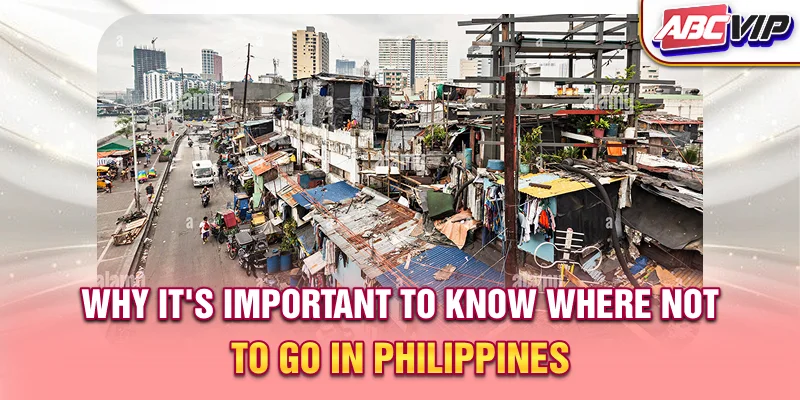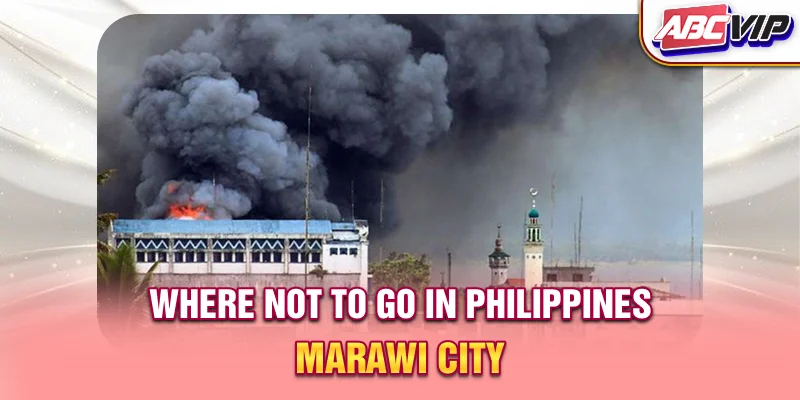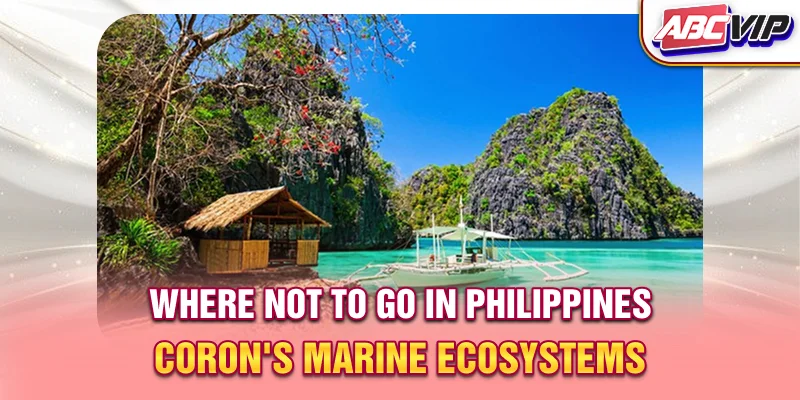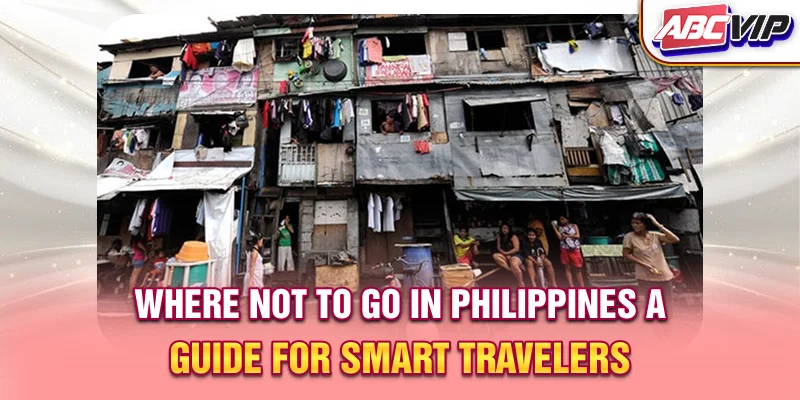Where not to go in Philippines? While the country offers world-famous beaches and vibrant culture, some areas pose safety, environmental, or logistical concerns. This guide of ABCVIP highlights spots travelers should avoid to ensure a smooth, secure, and respectful journey through this tropical paradise.
Why it’s important to know Where not to go in Philippines?
While the Philippines is generally safe for tourists, like any other country, it has regions that are best avoided due to various concerns such as political unrest, natural disaster risks, or high crime rates.
Knowing Where not to go in Philippines? will help you avoid unpleasant experiences and make informed decisions about your travel itinerary. It also ensures you’re respecting local communities and being a responsible traveler.

Conflict-prone areas: Safety first
One of the main reasons travelers ask Where not to go in Philippines? is due to safety. Although violence against tourists is rare, some parts of the country face instability. The southern region of Mindanao has long been subject to insurgent conflicts and terrorist threats.
Marawi City
Marawi City, located in the province of Lanao del Sur on Mindanao island, was the epicenter of a devastating armed conflict in 2017 between Philippine government forces and ISIS-linked extremist groups. The five-month siege left much of the city in ruins, displacing thousands of residents and resulting in widespread destruction of infrastructure.
Although rebuilding and rehabilitation efforts have been ongoing, progress remains slow, and large parts of the city are still not fully restored. Security concerns continue to linger in the area, with sporadic incidents of violence and the presence of armed groups in remote parts of the province.
Travel advisories from various governments consistently list Marawi and nearby municipalities in Lanao del Sur as areas to avoid due to risks of terrorism, kidnapping, and civil unrest. Local authorities are working toward long-term peace and recovery, but for now, the region remains unstable for tourism.

Sulu and Zamboanga
The Sulu Archipelago – which includes provinces such as Sulu, Basilan, and Tawi-Tawi – and the Zamboanga Peninsula in Western Mindanao are regions often flagged in travel advisories due to long-standing security challenges. These areas are known for persistent threats including maritime piracy, kidnapping-for-ransom operations, and sporadic terrorist attacks perpetrated by insurgent groups such as Abu Sayyaf and other extremist factions with ties to international terrorist networks.
Piracy and abductions have occurred both on land and at sea, with foreign nationals and even local residents being targeted. Some of these incidents have tragically resulted in prolonged hostage situations or fatalities. While Philippine authorities continue to implement counterterrorism and peacekeeping operations, the geography of the region – composed of isolated islands and coastal villages – makes complete security coverage difficult. This has allowed criminal and militant elements to maintain a presence in remote areas.
The Zamboanga Peninsula, which includes the provinces of Zamboanga del Norte, Zamboanga del Sur, and Zamboanga Sibugay, has also experienced unrest, including clashes between government forces and armed groups. While urban centers like Zamboanga City may appear more stable and developed, they still face elevated security risks, especially in surrounding rural or coastal areas.
As a result of these ongoing threats, many foreign governments – including those of the United States, United Kingdom, Canada and Australia – routinely issue strict travel warnings against non-essential travel to the Sulu Archipelago and parts of the Zamboanga Peninsula. These advisories are based on intelligence, local conditions, and incident history that indicate a continued risk to both locals and tourists.
Taal Volcano Region (During Alert Levels)
Taal Volcano in Batangas is one of the most active volcanoes in the country. When under alert, it is best to steer clear. Tourists often overlook volcanic risks when wondering Where not to go in Philippines?, but natural threats are just as important to consider as political ones.
Eastern Samar during typhoon season
Eastern Samar and other parts of Eastern Visayas often face the brunt of typhoons. If you’re visiting between June and November, it’s wise to monitor weather advisories. Avoiding these regions during peak storm seasons should be part of your plan when deciding Where not to go in Philippines?
Boracay (During Rehabilitation Periods)
Boracay has been closed to tourists in the past for environmental rehabilitation. While it has since reopened, ongoing efforts to protect the island mean temporary restrictions can return. When asking Where not to go in Philippines? out of respect for nature, Boracay during its downtime is worth skipping.
Coron’s Marine Ecosystems
Though Coron is known for its world-class diving spots, excessive tourism has started to impact coral reefs and marine biodiversity. Visitors should consider alternative eco-friendly destinations. If environmental ethics guide your travel, you’ll want to know Where not to go in Philippines to reduce your ecological footprint.

Certain Districts
Districts like Tondo and Quiapo have higher crime rates, including petty theft, scams, and occasional violent incidents. If you’re unsure Where not to go in Philippines? within its capital, avoid isolated streets, poorly lit areas, and always keep an eye on your belongings.
Colon Street, Cebu City
Although historically significant, Colon Street in Cebu City has a reputation for pickpocketing and scams. Tourists are often targeted, especially those unfamiliar with the area. Knowing Where not to go in Philippines? within popular cities can help you enjoy urban culture safely.
Mount Apo Summit During Closure Periods
Mount Apo, the tallest peak in the Philippines, is periodically closed to allow the ecosystem to recover. If your travel dates align with a closure, you should avoid planning hikes here. A mindful traveler should always ask Where not to go in Philippines from an environmental perspective.
Conclude
Where not to go in Philippines? Knowing the answer to this question is key to a safe, responsible, and enriching journey. Avoiding certain areas for safety, environmental, or cultural reasons doesn’t limit your experience – it enhances it. By understanding where not to go in Philippines as mentioned by ABCVIP video, you travel with greater awareness, help preserve local communities, and make the most of the country’s stunning destinations. Plan wisely, stay informed, and let your trip reflect both adventure and respect.




